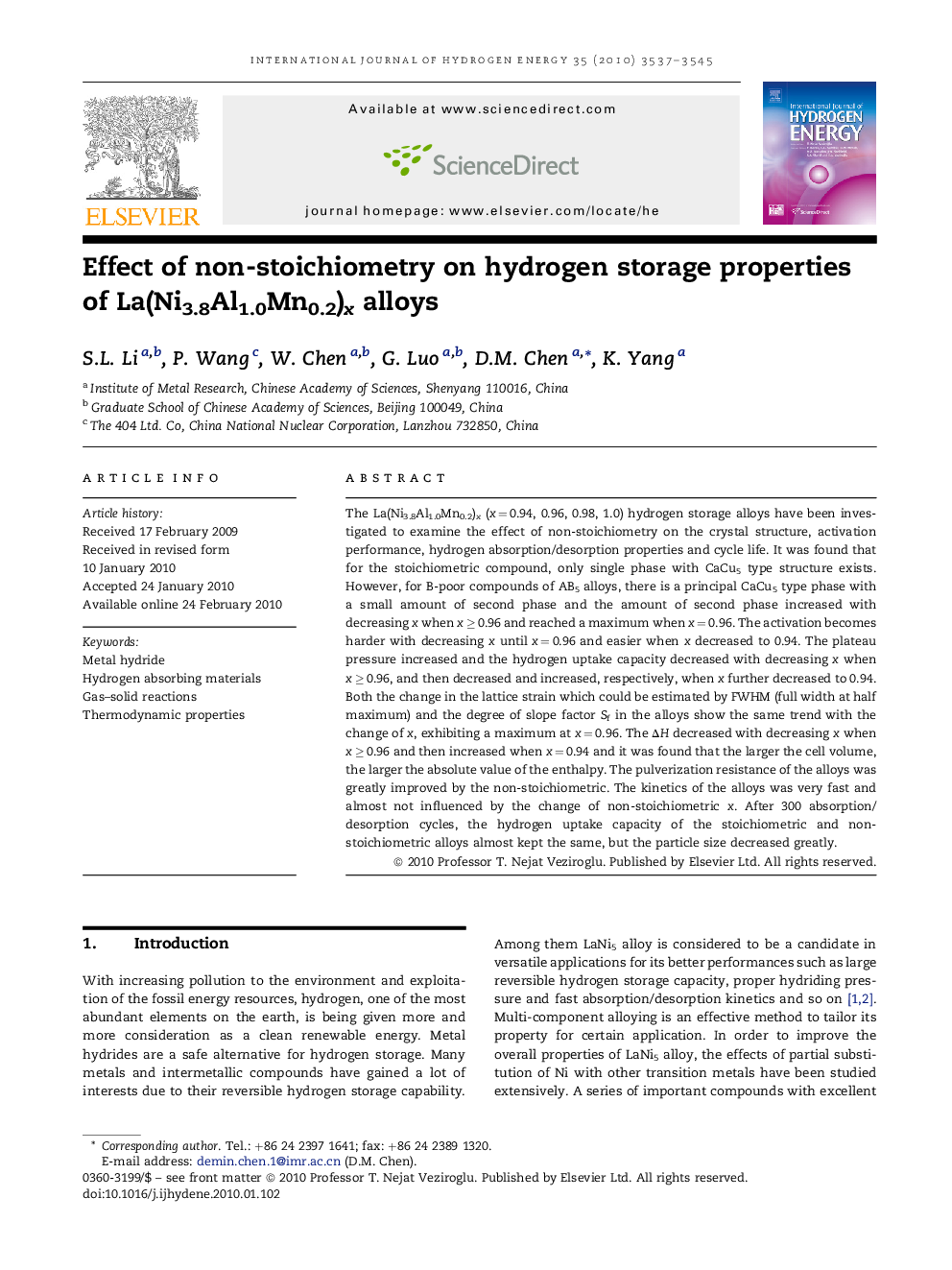| Article ID | Journal | Published Year | Pages | File Type |
|---|---|---|---|---|
| 1282909 | International Journal of Hydrogen Energy | 2010 | 9 Pages |
The La(Ni3.8Al1.0Mn0.2)x (x = 0.94, 0.96, 0.98, 1.0) hydrogen storage alloys have been investigated to examine the effect of non-stoichiometry on the crystal structure, activation performance, hydrogen absorption/desorption properties and cycle life. It was found that for the stoichiometric compound, only single phase with CaCu5 type structure exists. However, for B-poor compounds of AB5 alloys, there is a principal CaCu5 type phase with a small amount of second phase and the amount of second phase increased with decreasing x when x ≥ 0.96 and reached a maximum when x = 0.96. The activation becomes harder with decreasing x until x = 0.96 and easier when x decreased to 0.94. The plateau pressure increased and the hydrogen uptake capacity decreased with decreasing x when x ≥ 0.96, and then decreased and increased, respectively, when x further decreased to 0.94. Both the change in the lattice strain which could be estimated by FWHM (full width at half maximum) and the degree of slope factor Sf in the alloys show the same trend with the change of x, exhibiting a maximum at x = 0.96. The ΔH decreased with decreasing x when x ≥ 0.96 and then increased when x = 0.94 and it was found that the larger the cell volume, the larger the absolute value of the enthalpy. The pulverization resistance of the alloys was greatly improved by the non-stoichiometric. The kinetics of the alloys was very fast and almost not influenced by the change of non-stoichiometric x. After 300 absorption/desorption cycles, the hydrogen uptake capacity of the stoichiometric and non-stoichiometric alloys almost kept the same, but the particle size decreased greatly.
